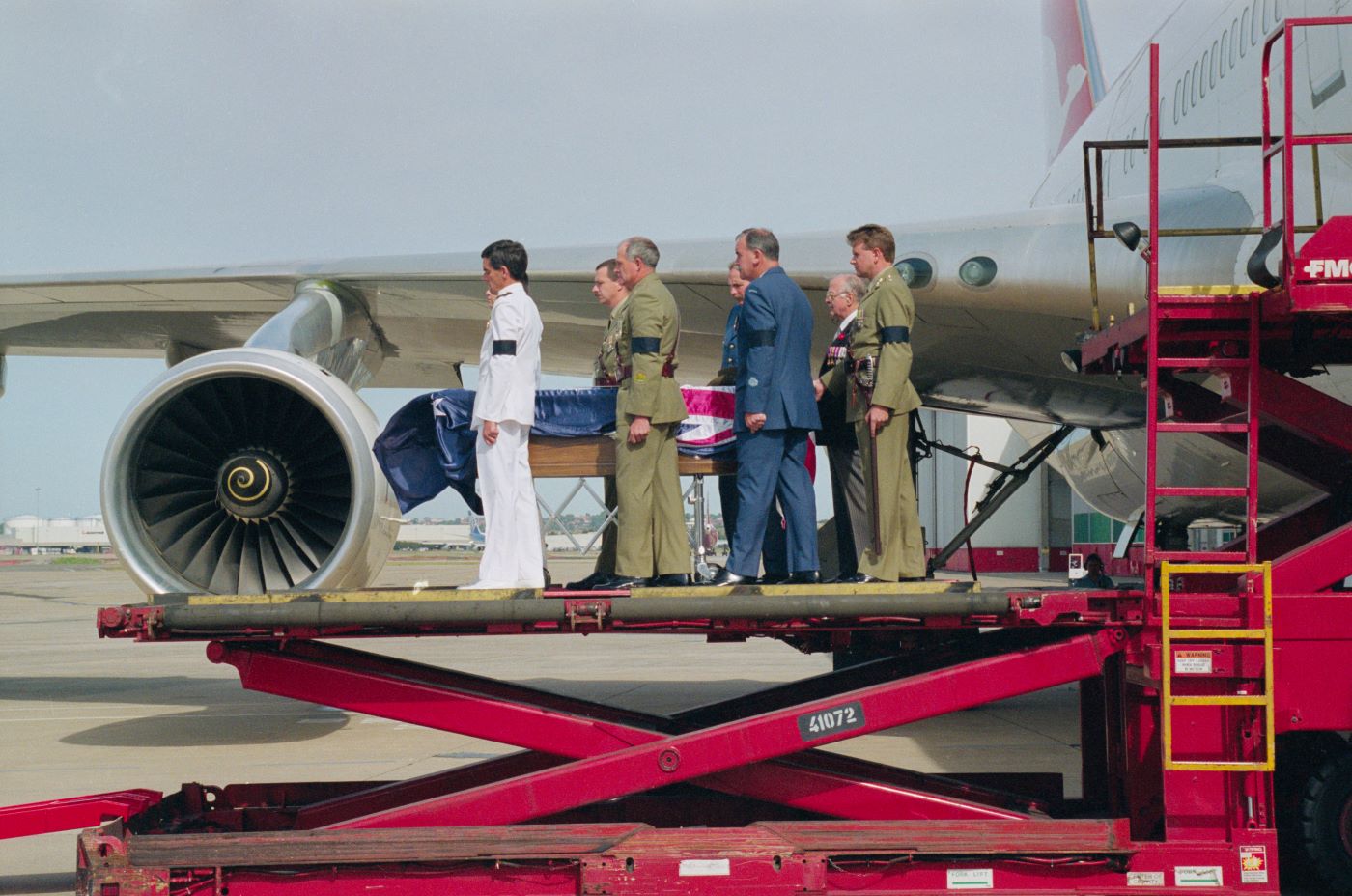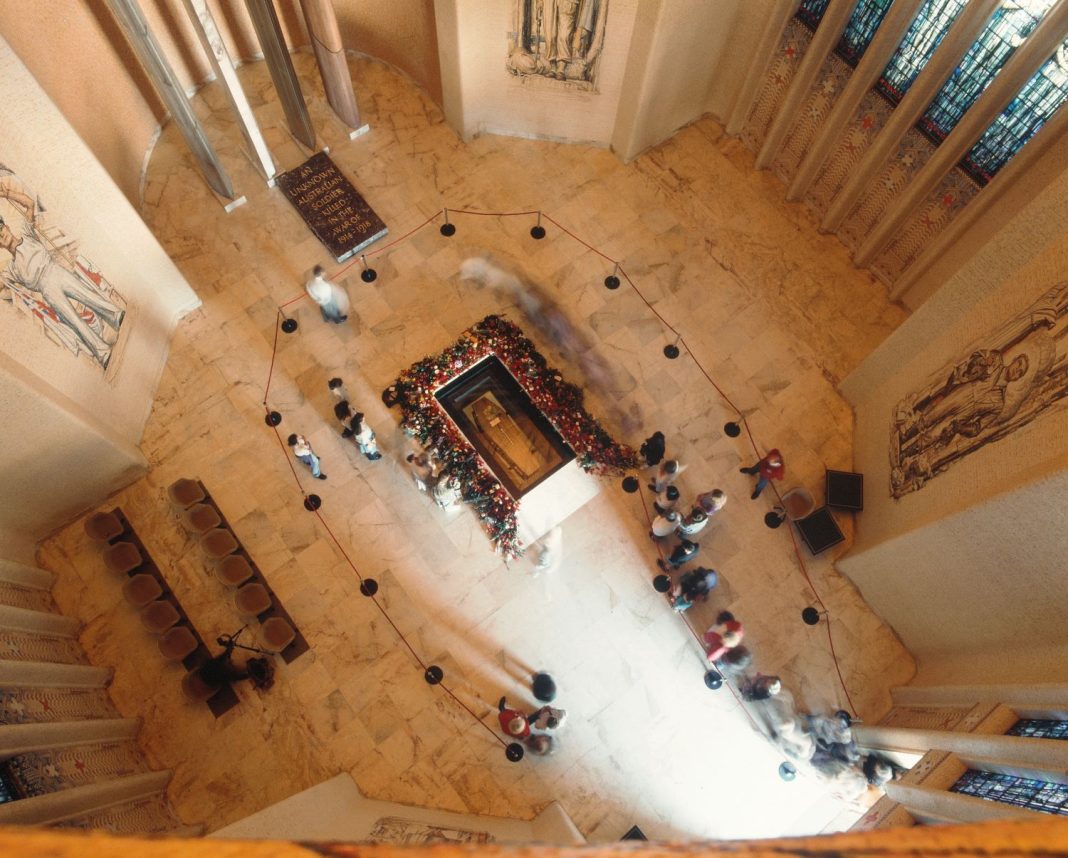At the rising of the sun on Anzac Day, 25 April, silence sweeps the nation as we remember the servicemen and women we have lost during war times. A symbol of all those who made the ultimate sacrifice in service of their country, the Tomb of the Unknown Australian Soldier represents a resting place for those whose bodies never made it home.
In the aftermath of the First World War, some countries including England and France commemorated their fallen with the interment of an unknown soldier, at national monuments like Westminster Abbey and the Arc de Triomphe, respectively. A poignant reminder of the bright-eyed soldiers heading off to war and the heartbreak of the mothers, lovers, family and friends who never saw them again, a tomb of an unknown soldier offers a place for mourning, remembrance and reflection.
“In Australia, there was some debate about whether or not we should do the same. In around 1922, there were some calls for Australia to repatriate an unknown soldier but these calls were rejected,” says Meghan Adams, historian at the Australian War Memorial.
In the 1970s, the idea was turned down by the Returned & Services League of Australia (RSL) and it was rejected once again in 1991. A contentious issue, Ms Adams explains people were hesitant to repatriate a soldier who was laid to rest so long ago. Others believed the symbolism was of great significance and represented the national grief that was still being felt.
“Especially after the end of the First World War, consider that Australia was very far from the front lines in places like France and Gallipoli. For people at home, they didn’t have the ability to visit a grave or have a place where they could mourn or recognise the loss that has been sustained,” Ms Adams says.
Senior management of the Australian War Memorial (AWM) revived the idea of repatriating an unknown soldier in 1992. Gaining significant support this time, it was given the go-ahead. In 1993, Brendon Kelson, director of the AWM, travelled with a small group to the Adelaide Cemetery in France where the Commonwealth War Graves Commission had identified four graves that might be suitable.
When selecting which soldier would represent all Australian soldiers, some guidelines had to be followed: the grave had to be unknown and contain the remains of a complete skeleton. The team found this in the first soldier they exhumed.

One of the approximately 20,000 unidentified soldiers who lost their lives during the First World War, the unknown soldier was an Anzac buried with no identifying items. Adelaide Cemetery was the soldier’s second resting place, likely to have been buried near where he fell, so his battalion, rank and place where he fell remain unknown.
“That allows us to preserve the anonymity of the unknown soldier because people aren’t able to speculate which unit he may have been with based on where the remains were found,” says Ms Adams.
Travelling home on the Spirit of Remembrance, a plane provided by Qantas, the soldier was welcomed by service personnel and escorted to Old Parliament House where he lay in state for several days.
Thursday 11 November 1993 – Remembrance Day and the 75th anniversary of Allied powers signing a ceasefire agreement, bringing an end to the great war – was chosen as the day the unknown soldier would be escorted to his final resting place.
In a Tasmanian blackwood coffin with a bayonet and a sprig of wattle, the unknown soldier was laid to rest in the Hall of Memory under the dome at the AWM with soil from the Pozières battlefield in France scattered in his tomb.
A sacred and powerful space, the Hall of Memory is adorned with over six million mosaic tiles in designs representing the service personnel from the Second World War. Stained glass windows commemorate service personnel from the First World War and highlight the qualities found in Australian service members.
We do not know who loved him or whom he loved. If he had children we do not know who they are. His family is lost to us as he was lost to them. We will never know who this Australian was.
We know that he was one of the 45,000 Australians who died on the Western Front. One of the 416,000 Australians who volunteered for service in the First World War … He is all of them. And he is one of us.
Prime Minister Paul Keating, entombing of the Unknown Australian Soldier, 11 November 1993.
It is not just for the war that the soldier fought in, he is a symbol of all Australian service personnel who have been lost in subsequent wars and peace keeping operations, and those who will be lost in wars to come. Even in death, the unknown soldier continues to serve his country, a reminder of what we have lost.
“He represents more than 103,000 Australians who have lost their lives during war. Not only that, his tomb provides a place for people to contemplate the cost of war, to lay floral tributes and to mourn,” says Ms Adams. “It also gives those who have died in the service of their country a spiritual connection to Australia, a final resting place that represents all of those who were laid to rest in faraway nations.”
An important point of national commemoration, anyone can visit the tomb and pay their respects, reflect on the toll of war and consider who the soldier might be. A different experience for everyone, the tomb of the unknown soldier can provide solace to people who have lost someone.
“It is possible for anybody visiting the tomb to wonder if it is a relative of theirs or somebody they had fought alongside,” says Ms Adams.
As technology advanced and DNA testing became more sophisticated, there have been people who want the body identified. However, Ms Adams explains that the anonymity of the soldier is crucial to the symbolism he holds.
“We don’t know who he is, where he was from, who he served with or how he died; he could be anybody. If we identify him as an individual, he represents just the individual and not the 103,000 Australians that we commemorate here at the War Memorial.”
To forever remain unidentified with his body entombed in the Hall of Memory and his name etched on the Roll of Honour, the unknown soldier will always be all of them and one of us.
Visit the tomb of the unknown soldier at the Australian War Memorial; awm.gov.au
Canberra Daily is keen to hear from you about a story idea in the Canberra and surrounding region. Click here to submit a news tip.



